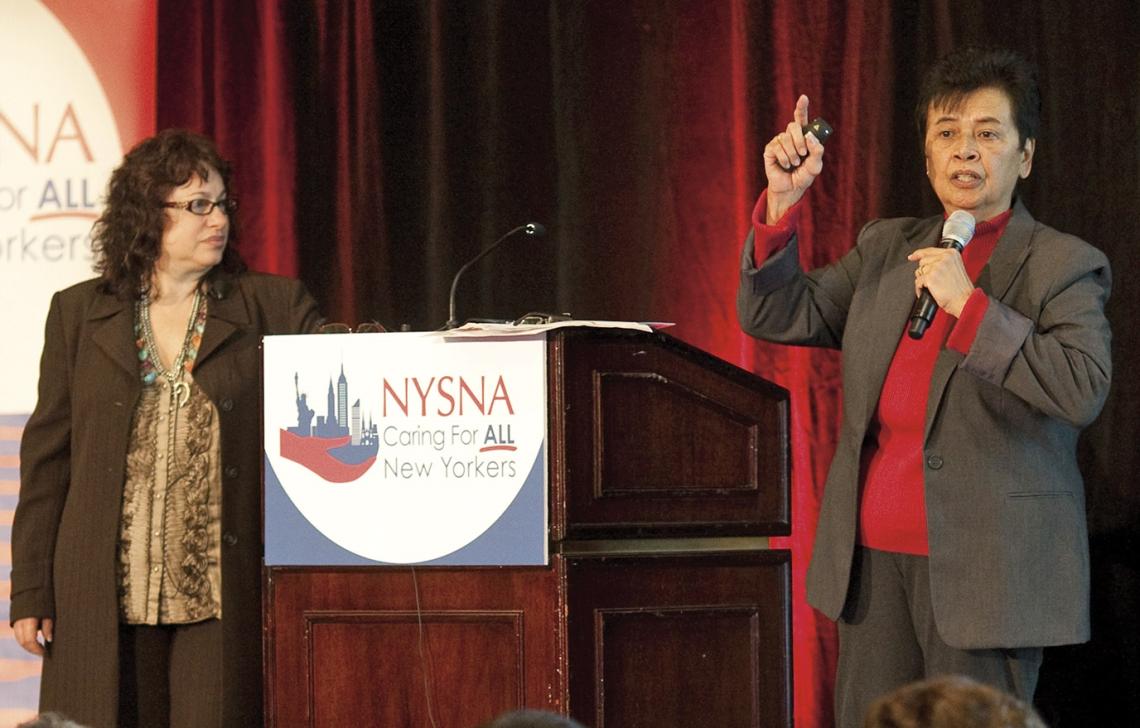Redesigning Nursing Care

The push toward greater health information technology undermines our nursing practice and often hurts the patients we care for and about. Our mission is to heal the sick and to advocate on their behalf. Machines are important in healthcare, obviously, but they also can get in the way.
The nursing process involves several steps. We gather information about our patients, assess their condition, diagnose, provide care, and evaluate changes over time. Our work is not static because patients aren’t. Conditions change and we respond accordingly, and quickly.
Health information technology is deskilling the clinical nursing process. Nursing is increasingly fragmented; we’re pushed to work faster; and more of our practice is automated. Bedside nurses are finding that we have less discretion in determining our patients’ care needs and in meeting those needs.
Our patients suffer under a fragmented, automated healthcare system, as do we.
Automated systems are not only taking the humanity out of the patient-nurse relationship, they are giving management the power to monitor our every step – and to speed us up. Electronic medical record systems, for instance, can count keystrokes and measure whether or not we’re working at a pace that management considers quick enough. Nursing isn’t like factory production, though. Faster care often is compromised care. Patients need attention, and we need the time to assess, and meet, their needs.
Robotic care
Perhaps one of the most jarring developments in the push to re-engineer nursing practice is the development of virtual care and robots designed literally to fill our shoes. The Robert Wood Johnson Foundation Initiative on the Future of Nursing, for instance, recommends creating virtual care systems that have RNs supervising robots and unlicensed assistive personnel. In the healthcare environment of tomorrow, patients would receive care at home or in hospitals with much of their treatment managed virtually by an interdisciplinary care team. The team would use web cams, Bluetooth technology, barcode medication verification scanners, and other information transfer devices to direct robots or unlicensed staff from afar.
The robotic world of healthcare delivery would give new meaning to depersonalized care. It would also fuel the fight over nurse-to-patient ratios, as bedside care would become less important to administrators, if not to patients.
This is not a sci-fi fantasy that’ll never come to pass. It’s happening. In January, the FDA approved the country’s first human-interacting autonomous robot for hospitals. InTouch Health has developed a human-sized robot, RP-VITA, which enables doctors to interact remotely with hospital patients. The robot can even navigate hospital corridors on its own while medical professionals talk with patients through a special iPad app. InTouch Health’s tagline: Telemedicine delivered.
Fighting back
RNs are not accepting this brave new world without a fight. Our mission matters too much to let management or machines undercut our professional practice and our role as patient advocates. Across the country, nurses are standing up to the attack on quality nursing care.
We’re taking a stand on four key principles: patients before profits; safe staffing; universal healthcare; and nurses’ organizing rights. We’re fighting to keep for-profit hospitals out of our state. We’re fighting for a safe staffing law to protect patients and nurses. We’re advancing the idea that the only real solution to America’s healthcare crisis is a single-payer system that covers everyone. And we’re helping nurses across New York State join NYSNA and win the power that comes with being union together.